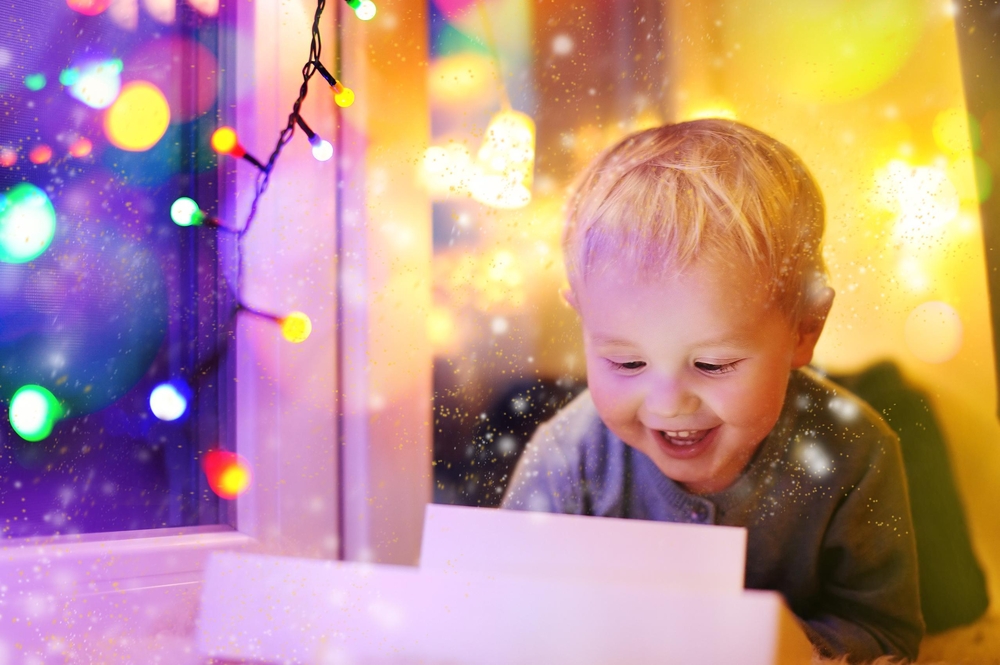Toys are supposed to be a source of joy for children (and bigger kids that are young at heart). However, many toys on the market—although having all the relevant inspections and certifications—may not be right for your little one on Christmas morning.
While danger and toys might not be two words that are synonymous to you, consider this: the Consumer Product Safety Commission published its 2015 toy-related deaths and injuries report, showing 11-toy related deaths for the calendar year. If that number doesn’t faze you, how about this one: a reported 254,200 toy-related injuries were treated in U.S. emergency departments during the same year. Let’s look at six ways to reduce this number, at least during the holidays (December also happens to be Safe Toys and Gifts month)…
1. Focus on Newer Toys
While you may have the urge to wrap up at least one older toy that has sentimental value, you should only give new ones, KidsHealth.org advises. Despite the fact that a toy brought you or someone else joy as a kid, doesn’t mean it’s the safest choice for your little one.
This is because toys from yesteryear didn’t necessarily face the same safety standards as today’s toys, notes the source. Also, the item may be used to the point where components have become more brittle, which can lead to injury or choking.
2. Follow the Age Guidelines
It’s easy to say to yourself, “My niece Jenny is getting close to three, so 3-year old safe labels are the way to go,” but someone (or a group) has spent a lot of time putting toys in various age classifications—presumably for a good reason.
“Be realistic about your child’s abilities and maturity level when choosing an age-appropriate toy,” notes BabyCenter.com. With this in mind, toys that fire projectiles are not appropriate for kids under four, advises the source. Determine whether your 3-year old still enjoys stuffing random things into their mouth– and then look for potential choking hazards in the toy marked “safe” for 3-year-olds.
3. Paint by (Safe) Numbers
If paints, crayons or art markers are on your list, look for something on the package that reads “ASTM D-4236”. This means the product has been properly reviewed for potentially toxic contents (posing a health hazard), according to GreenAmerica.org.
All art supplies in the U.S. should comply with this under the Labelling Hazardous Art Materials Act (LHAMA), notes the site. This particular label doesn’t mean the product is free of any health hazards, but it means that any risks are clearly stated (from being a potential skin irritant to being fatal if swallowed).
4. Don’t Always Roll with Riding Toys
Of the 11-reported fatalities from toys in 2015 reported by the Consumer Product Safety Commission, five involved a riding toy. It’s apparently not the toy itself that somehow malfunctioned and caused death; it’s from motorized vehicles colliding with them. “All of the riding toy deaths were due to motor vehicle involvement,” notes the source.
While it’s not explicitly stated, it’s probably best to keep kids playing on riding toys away from roadways, and pay special attention when you’re backing out of your driveway as well. If you’ve got a good-sized yard located away from traffic, perhaps make use of it for this purpose.
5. Loud Colors, But not Loud Speakers
Now hear this: while you may be attracted to a certain toy for its aesthetic value, but there are more senses involved with some toys than just visuals. Check to see if the toy makes noise—which can do more than annoy the parents of the child you’re gifting the item to.
WebMD notes that loud noises from toys may pose a threat to a child’s hearing, which is more sensitive than yours. So while a siren noise from a toy may cause you to grit your teeth, it could actually be doing lasting damage to a child’s ears.
6. More (Pieces) Doesn’t Mean Better
EveryDayHealth.com says that some games could have many pieces, but if you’re considering it for a gift to an infant or toddler, you should think twice about it. More specifically, it notes that if parts are smaller than 1.75-inches, it’s best to give the toy a pass (due to choking risk).
A rule of thumb is that if you can fit an object into an empty toilet paper roll, it’s probably a choking hazard, notes the source. Be wary of stuffed animals that use small beads or pellets as filler, as those can break open and cause danger as well.









